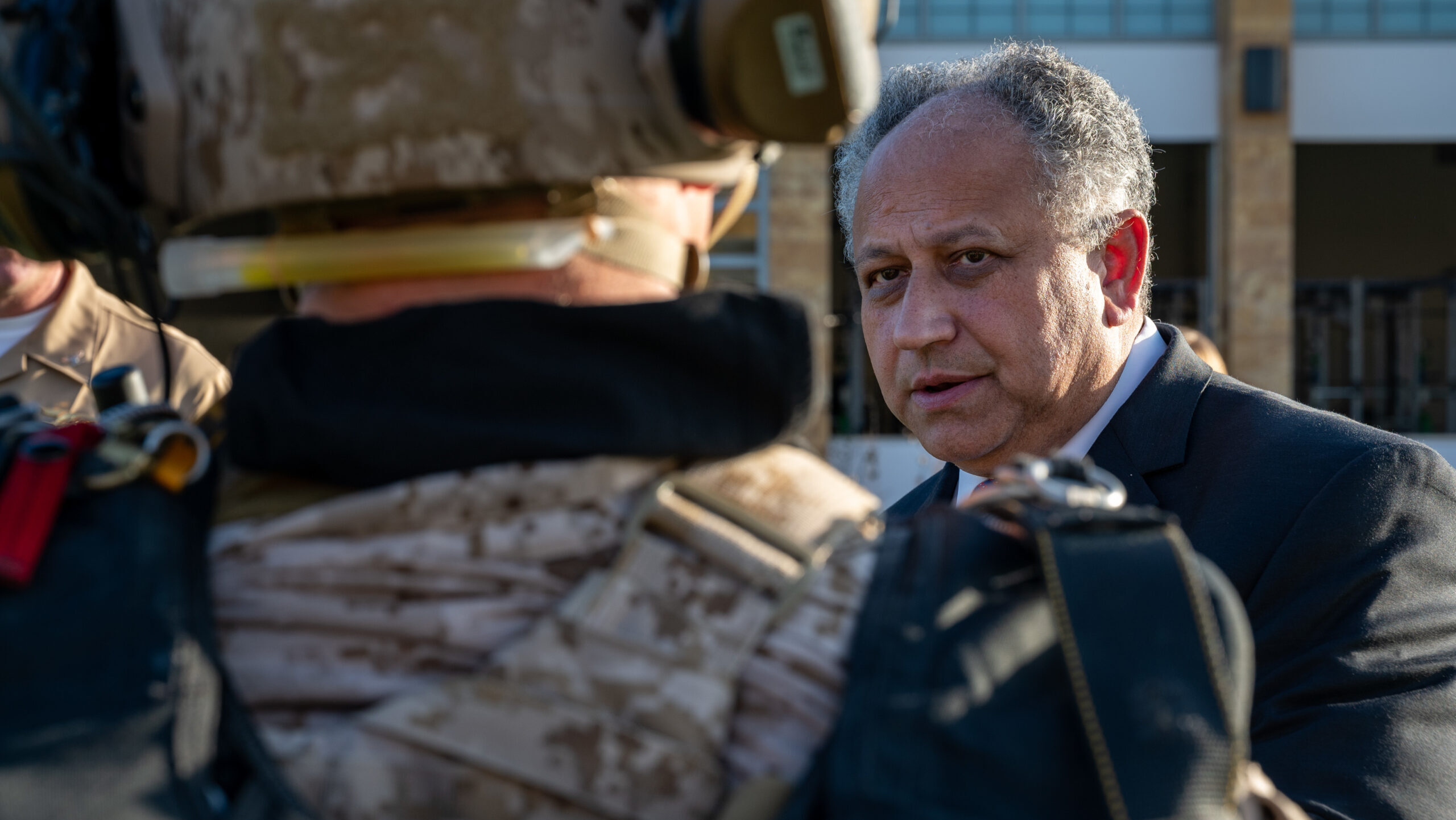
Secretary of the Navy Carlos Del Toro speaks to sailors assigned to Naval Special Warfare units in the San Diego area. (U.S. Navy photo by Mass Communication Specialist 2nd Class T. Logan Keown/Released)
AOC 2023 — Navy Secretary Carlos Del Toro today said the conflicts in Ukraine and elsewhere have sparked a “race” to more rapidly develop and field electronic warfare capabilities, warning it is an “imperative” for the US to keep pace with its adversaries.
“Given the focus and emphasis that nations around the globe are putting on developing capabilities and technologies to enable their militaries to successfully maneuver across the [electromagnetic] spectrum, it is imperative that we, in concert with our allies and partners, remain committed to prioritizing our warfighters’ freedom of action and ability to achieve spectrum superiority,” the secretary told an audience at the Association of Old Crows’ annual symposium.
Del Toro cited the proliferation of unmanned aerial systems, most prominently used in Ukraine, as prompting the need to develop and field electronic warfare systems. Since the start of Russia’s invasion there, numerous videos have flooded social media of forces on either side using drones to attack enemy positions and vehicles. One recent video showed a Russian soldier literally running from and fighting off a drone armed with an explosive device.
“What’s more, early in Russia’s invasion, we saw them leverage their electronic warfare capabilities in an effort to deny the Ukrainians use of Starlink — an episode that demonstrated the resiliency of a commercial company to counter a nation-state’s actions directed at disrupting access to space-based resources,” said Del Toro.
RELATED: SpaceX beating Russian jamming attack was ‘eyewatering,’ DoD official says
In the Middle East, the secretary said the three American destroyers that have made headlines in recent weeks by shooting down a variety of drones and missiles were “supported by our systems that leverage the electromagnetic spectrum for early warning, identification and tracking.”
He also said China’s military, which the Pentagon routinely calls its “pacing threat,” is equally focused on the development of electronic warfare capabilities.
“The People’s Liberation Army is also pursuing a strategy to develop, test, field, and integrate space, counter-space, cyber, electronic, and information warfare capabilities, posing potential challenges to how we operate across the spectrum,” Del Toro said. “The PRC’s electronic warfare strategy emphasizes the suppression, degradation, or deception of enemy electronic equipment across the entire continuum of conflict.”
While the Navy and Marine Corps already have several EW-focused programs of record, such as the Navy’s E/A-18 Growler aircraft and the Marines’ Distributed Aperture Infrared Countermeasures system, Del Toro said a raft of newer offices stood up aimed to expedite the acquisition process will also look to fill capability gaps in the electromagnetic spectrum.
Related: Navy’s Unmanned Task Force To Close Down With Arrival Of New Disruptive Capabilities Office
“Our current and future multi-domain operations depend on our ability to maintain superiority within the EMS [electromagntic spectrum] environment, and we are committed to pursuing policies, acquisition programs, recruiting and training initiatives, and international partnerships and programs that will provide our Sailors and Marines with the capabilities and skillsets required to defend our nation,” Del Toro said.






















